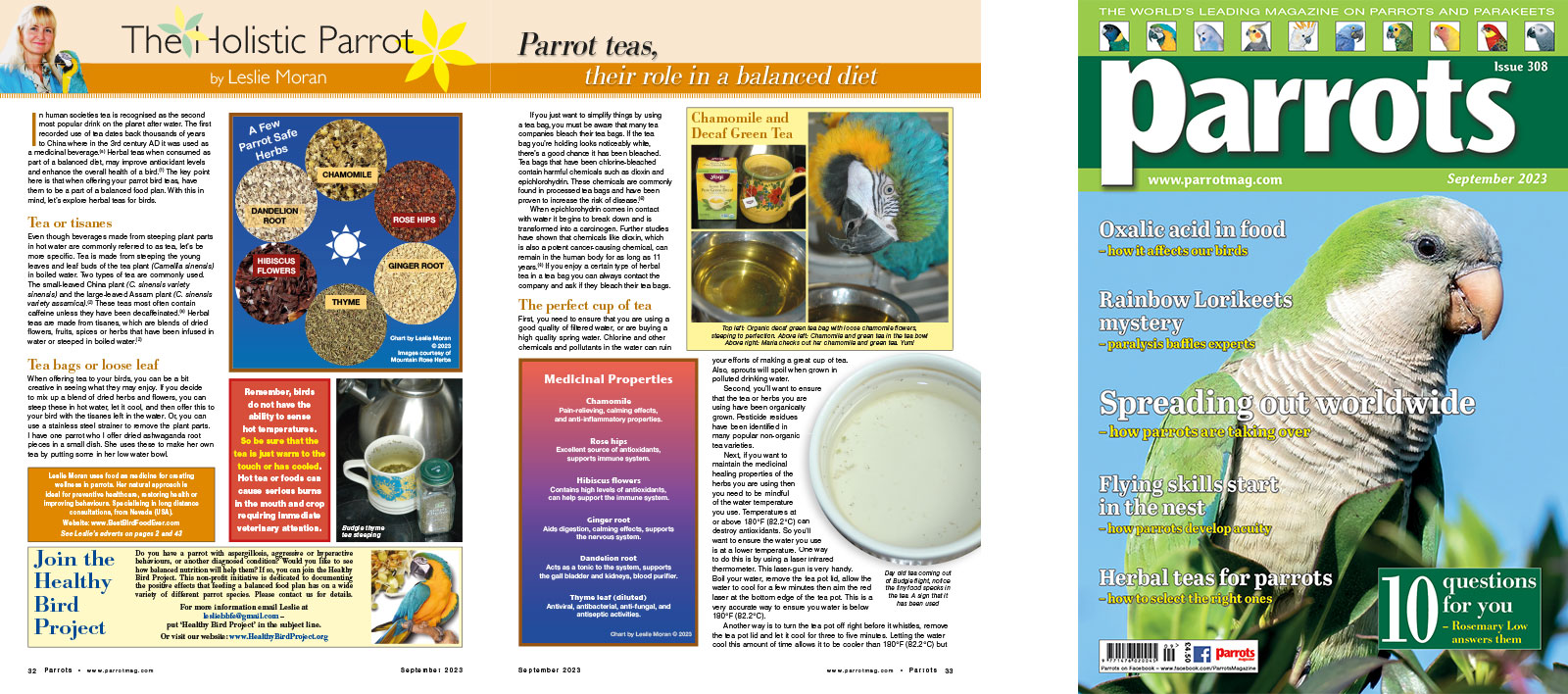
The Holistic Parrot by Leslie Moran
In human societies tea is recognised as the second most popular drink on the planet after water. The first recorded use of tea dates back thousands of years to China where in the 3rd century AD it was used as a medicinal beverage. Herbal teas when consumed as part of a balanced diet, may improve antioxidant levels and enhance the overall health of a bird. The key point here is that when offering your parrot bird teas, have them to be a part of a balanced food plan. With this in mind, let’s explore herbal teas for birds.
Even though beverages made from steeping plant parts in hot water are commonly referred to as tea, let’s be more specific. Tea is made from steeping the young leaves and leaf buds of the tea plant (Camellia sinensis) in boiled water. Two types of tea are commonly used. The small-leaved China plant (C. sinensis variety sinensis) and the large-leaved Assam plant (C. sinensis variety assamica). These teas most often contain caffeine unless they have been decaffeinated. Herbal teas are made from tisanes, which are blends of dried flowers, fruits, spices or herbs that have been infused in water or steeped in boiled water.
When offering tea to your birds, you can be a bit creative in seeing what they may enjoy. If you decide to mix up a blend of dried herbs and flowers, you can steep these in hot water, let it cool, and then offer this to your bird with the tisanes left in the water. Or, you can use a stainless steel strainer to remove the plant parts. I have one parrot who I offer dried ashwaganda root pieces in a small dish. She uses these to make her own tea by putting some in her low water bowl.








Parrot Chat
Buyers Guides
Breeding articles